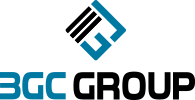A Guide to the ITIL Framework
- Karl Aguilar
- Jul 11, 2024
- 3 min read

Most companies establish enterprise grade information technology (IT) systems from day one. But doing so effectively is a complex endeavor. It is very important as well to establish the operational framework that is needed for the organization’s IT system to function effectively and properly.
This need spawned ITIL or the Information Technology Infrastructure Library, which has become known as one of the most widely used IT service frameworks since its inception in the 1980s. But what exactly is ITIL and how does it ensure efficiency in the organization’s IT processes?
The ITIL Framework
ITIL is not a monolithic system but rather a series of best practices for IT services delivery. By services, ITIL refers to any element required to provide technology to an organization, from software to documentation to workflows, in order to facilitate the standardization of processes.
ITIL is intended to support an organization’s execution of IT service management (ITSM), an approach to overseeing a company’s technology that meets internal and external customer requirements. Through ITSM, ITIL aligns a company’s technical investments to its business needs. In a real-world scenario, the ITIL establishes the procedures to certain areas such as training, dealing with technical issues, and rolling out updates for the business to be able to deliver technical solutions to its customers.
ITIL’s Four Dimensions Model
The ITIL framework is built upon what is called the “four dimensions model,” comprised of the necessary ingredients to create a high-quality ITSM experience. These four dimensions are as follows:
Organizations and people: IT serves the organization, and that organization is composed of employees and customers with different needs that need to be addressed in a satisfactory manner.
Value streams and processes: This dimension serves as the heart of ITIL. The value chain supports both linear and iterative approaches such as agile methodologies. The service value chain also outlines the flow of IT service delivery from the recognition of customer demand through to value creation and the steps in between.
Information and technology: Every IT service consists of technology, as well as the information required to enable that technical solution.
Partners and suppliers: Partners and suppliers of technology also contribute key pieces to the overall IT service provided by your business.
Benefits of ITIL
ITIL became a popular ITSM execution approach because it delivers many business benefits. Among them being:
Improved customer satisfaction - ITIL identifies critical customer-facing IT functions, addresses customer feedback, and implements changes while minimizing customer disruption. These processes streamline workflows, leading to faster, more efficient IT services to customers. In turn, this facilitates higher customer satisfaction and retention.
Reduced business risk -, ITIL processes address not only cybersecurity concerns but also legal and regulatory issues that may arise due to outdated or non-compliant technology, as well as other matters that expose the business to increased risk, such as IT system upgrades.
Better business alignment – As ITIL primarily aims to align IT services with business needs, it thus reduces inherent technology complexity that often leads to misaligned business expectations, resulting in IT service conflicts. ITIL tackles IT asset management to keep costs in check, sets service level agreements (SLAs) with stakeholders, and outlines its commitment to addressing system issues or service requests within a designated time frame.
A Continuing Evolution
The ITIL framework reflects the continuing evolution of IT processes in addressing the changes in the business and technology environments. As an example, the previous version of ITIL was based on prescriptive processes but the newer version favors a more flexible approach, reflecting the current attitudes favoring towards more flexible working environments and the fact that businesses are looking to address IT needs in divergent ways. The newer version of the ITIL framework also recognizes that other IT methodologies can benefit organizations and provides guidance and advice around these other approaches such as DevOps, an IT framework that merges software development support with IT service operations.
Suffice to say, the ITIL framework has proven itself in addressing the changing IT needs of the enterprise and is a key driver towards its growth and success in such a dynamic environment.







Comentarios